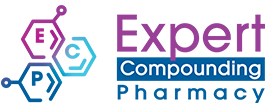Hyperpigmentation Cream

Hyperpigmentation Creams: Alleviating Melasma
Understanding Melasma: Melasma, a prevalent skin condition primarily affecting women, manifests as dark patches, typically on the face. Commonly, these patches develop on the forehead, bridge of the nose, cheeks, and upper lip. While the precise cause remains elusive, it's thought to stem from a blend of hormonal shifts, UV exposure, and genetic predispositions. While safeguarding against the sun is crucial—through daily sunscreen application, hat usage, etc.—it may not suffice to reverse existing dark spots. Although melasma induced by hormonal changes, such as pregnancy or birth control, may naturally fade, some cases necessitate treatment to diminish the spots for cosmetic reasons, despite melasma's non-harmful nature.
Hyperpigmentation Creams: Aiding Melasma Management
Hyperpigmentation creams play a pivotal role in melasma treatment by lightening dark spots. Customized to individual needs, these compounded products, prescribed by physicians, boast unique ingredient blends like retinoic acid, hydroquinone, kojic acid, and methimazole. Together, these components combat melasma and foster firm, even-toned skin. Most users witness dark spot improvement within several months of consistent application.
Key Components of Hyperpigmentation Creams
Retinoic Acid: Derived from Vitamin A, retinoic acid is a skincare staple revered for its anti-aging properties. In conjunction with other ingredients, it effectively diminishes hyperpigmentation by reducing melanin production in the epidermis. Notably, while topical retinoic acid shouldn't induce hypopigmentation when exposed to other skin areas, its use heightens sun sensitivity, necessitating stringent sun protection measures.
Hydroquinone: Similar to retinoic acid, hydroquinone aids in melanin reduction within the epidermis, thereby lightening the skin. Esteemed as the gold standard in hyperpigmentation treatment, it synergizes exceptionally well with retinoic acid. While certain hydroquinone products are available over the counter, their potency pales in comparison to compounded prescription hyperpigmentation creams.
Kojic Acid: Sourced from fungi, kojic acid's natural occurrence renders it a sought-after ingredient in hyperpigmentation creams. Its capacity to lighten skin by curbing melanin production makes it a prevalent choice, also extending to food and makeup coloration control.
Methimazole: Predominantly recognized in oral form as an anti-thyroid medication, methimazole, when employed topically, inhibits melanin formation without interfering with thyroid hormones. Individuals resistant to hydroquinone-based creams may find relief in methimazole-based alternatives.
Additional Treatment Modalities: Beyond hyperpigmentation creams, alternative melasma treatments encompass topical steroids, chemical peels, laser therapy, light therapy, and dermabrasion.
Resource: American Academy of Dermatology (https://www.aad.org/public/diseases/color-problems/melasma)
